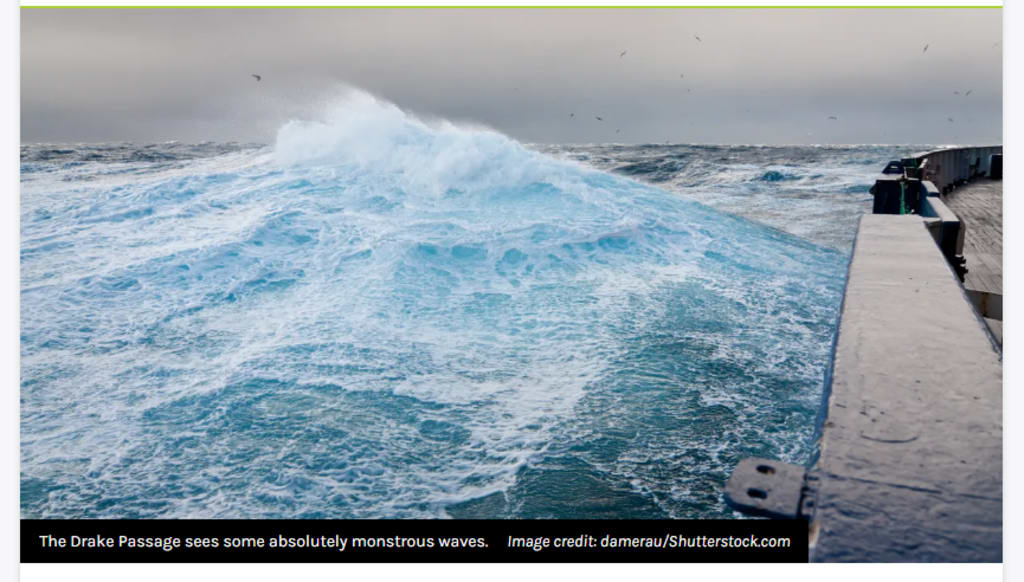One of the world's most dangerous sea crossings is the Drake Passage.
Here are some tips for traveling through the Drake Passage: pack extra clothes and travel sickness medication.

The infamous Drake Passage, which connects Antarctica's South Shetland Islands to Cape Horn in South America, is one of the world's most terrifying ocean crossings. The passage has a reputation for being among the most dangerous in the world because of its strong currents, icy seas, fierce winds, and massive waves.
The Drake Passage: What Is It?
The Drake Passage, at around 800 kilometers wide (500 miles) and 1,000 kilometers long (600 miles), is the shortest path connecting the Antarctic continent to any other mainland. One of the main reasons why people didn't step foot in Antarctica until the 19th century was because of its extremely hostile waters.
The passage bears the name of Sir Francis Drake, an English explorer from the 16th century who made a round of the globe between 1577 and 1580. To accomplish this achievement, Charles and his fleet had to navigate the icebergs and rocky islands of South America's tip via the Strait of Magellan. Drake's journey informed the English that there was open water south of South America, even though he never made the passage himself.
The Drake Passage, named for the Spanish navigator Francisco de Hoces, who discovered the body of water in 1525 while sailing through the Strait of Magellan, is what makes the world's circumnavigation possible by boat. Willem Schouten, a captain for the Dutch East India Company, led the first crew to circumnavigate the globe in 1616.
Why is it so risky to cross the Drake Passage?
Because there is no terrain to impede the flow of some of the strongest ocean currents in the world, torrents of water can "let rip" and exert enormous force across the Drake Passage.
Similarly, at this latitude, powerful winds can race thousands of kilometers without coming into contact with land, creating violent storms and enormous waves. There have been reports of waves as high as 25 meters (82 ft), or around the height of an eight-story structure, during passage through the Drake Passage.
How does a ship navigate the Drake Passage?
After a 13-day struggle with the weather, a courageous group of six explorers made history on Christmas Day 2019 by becoming the first people to row across the tunnel.
It was terrifying. After the voyage, Colin O'Brady, one of the six men on the boat, told the Associated Press, "We were all delirious from the lack of sleep and had lost a good amount of weight by the end."
Many people have bravely crossed the Drake Passage in modern times, mostly on their way to Antarctica. The voyage is far more comfortable now on large, contemporary ships than it was centuries ago, but if you choose to travel, bring travel sickness medication.
The cost of entering the Antarctic is traversing the Drake Passage. The drama and turbulence of the Drake contrast with the calm and tranquility of the Antarctic. You cannot have one without the other since they are two sides of the same coin. In a blog post about traversing the passage, Lyndon File, customer experience manager at G Adventures, a tour business that offers trips to Antarctica, noted that the circumstances of the Drake are, depending on the weather gods, somewhere between horrible and dangerous, but worth every moment.
"I felt like a soiled, wet sock in a washing machine set to spin for 36 hours." I've never experienced motion sickness symptoms.
My recommendation is to not freak yourself out but to be ready for the worst. Go with the flow and focus on the goal and the horizon at all times; Antarctica awaits you at the end of the journey, no matter how difficult the going gets.






Comments
There are no comments for this story
Be the first to respond and start the conversation.